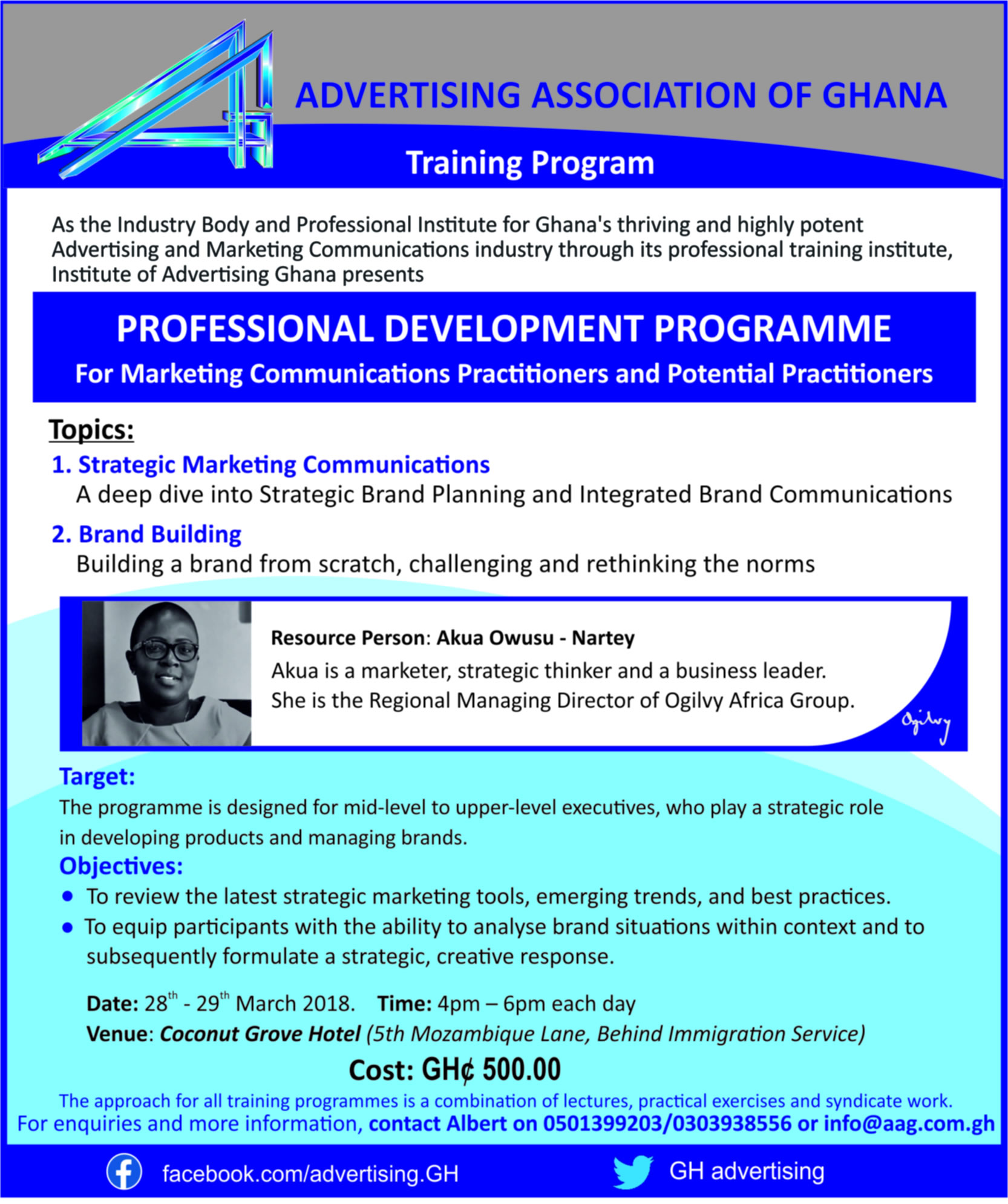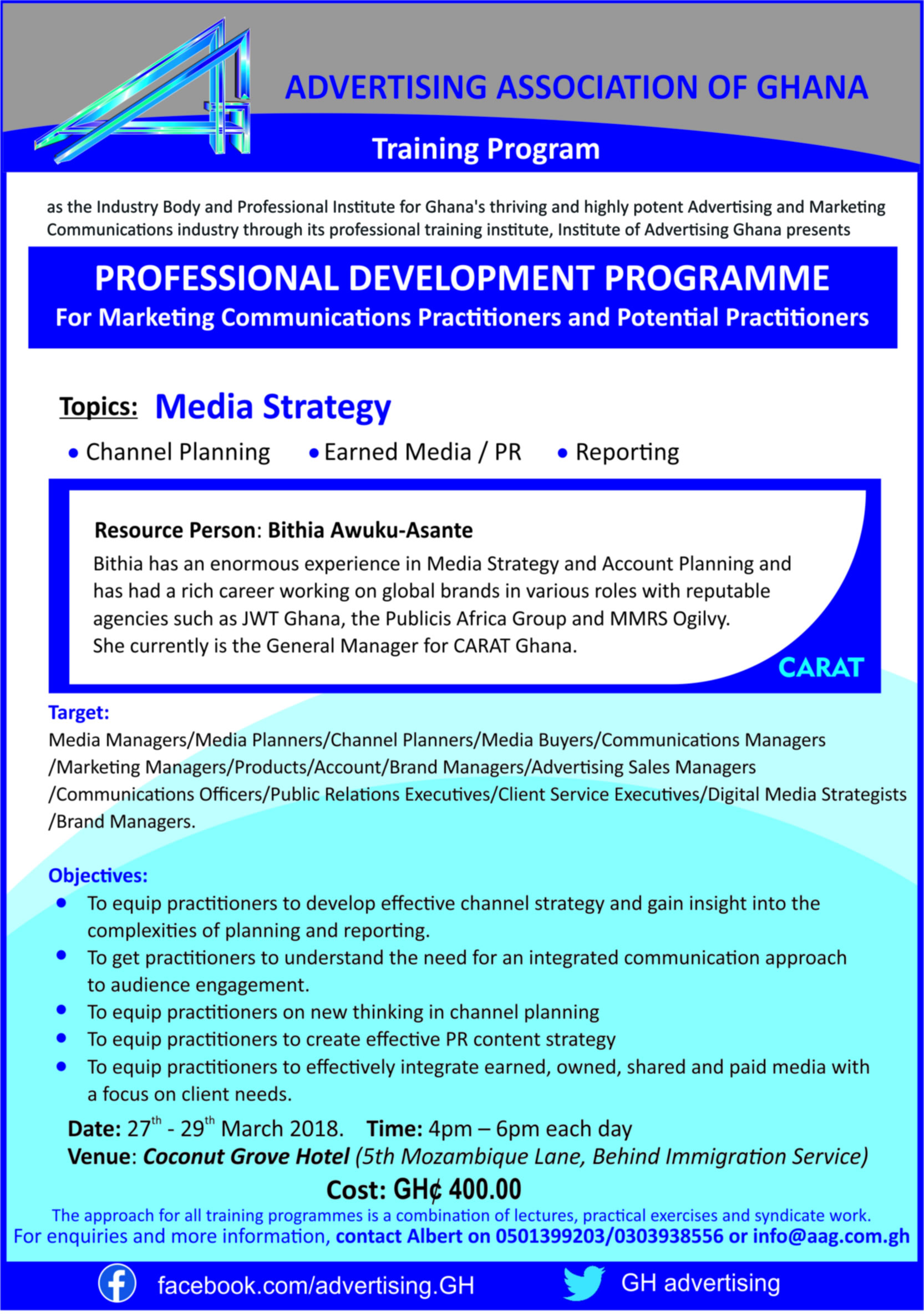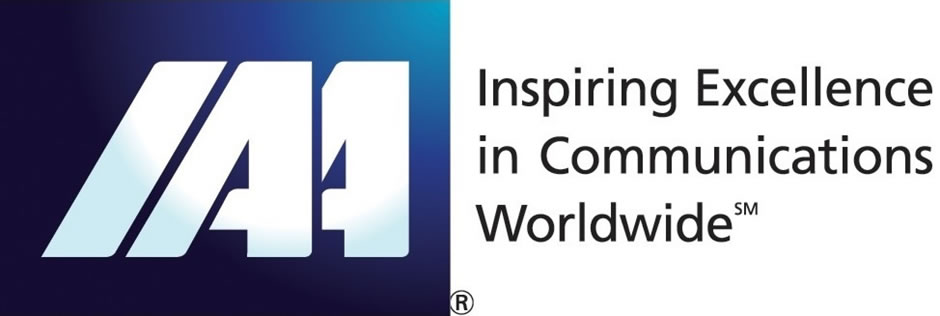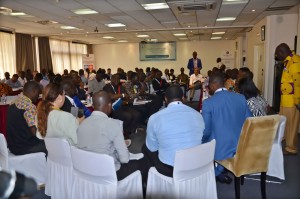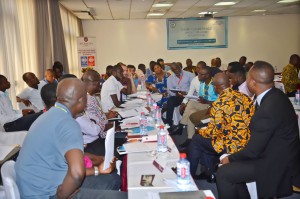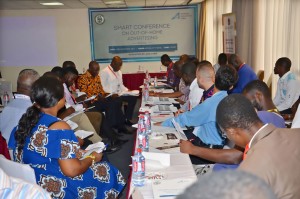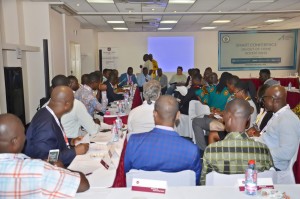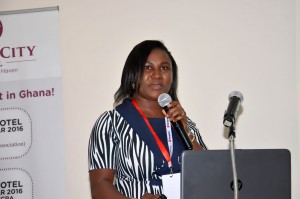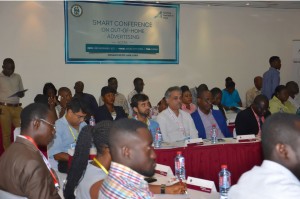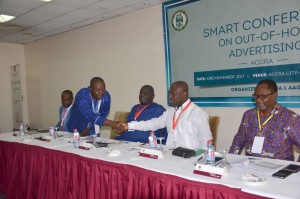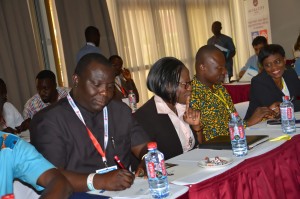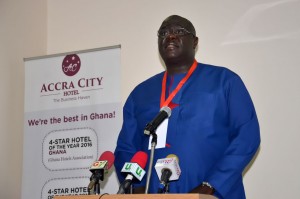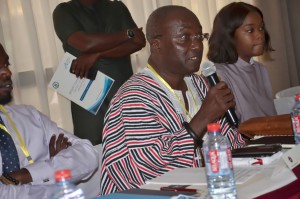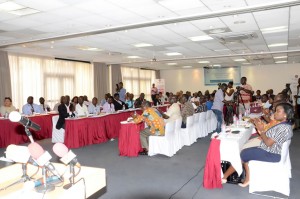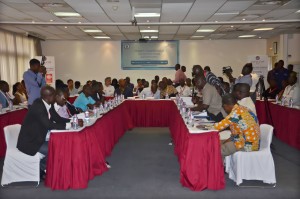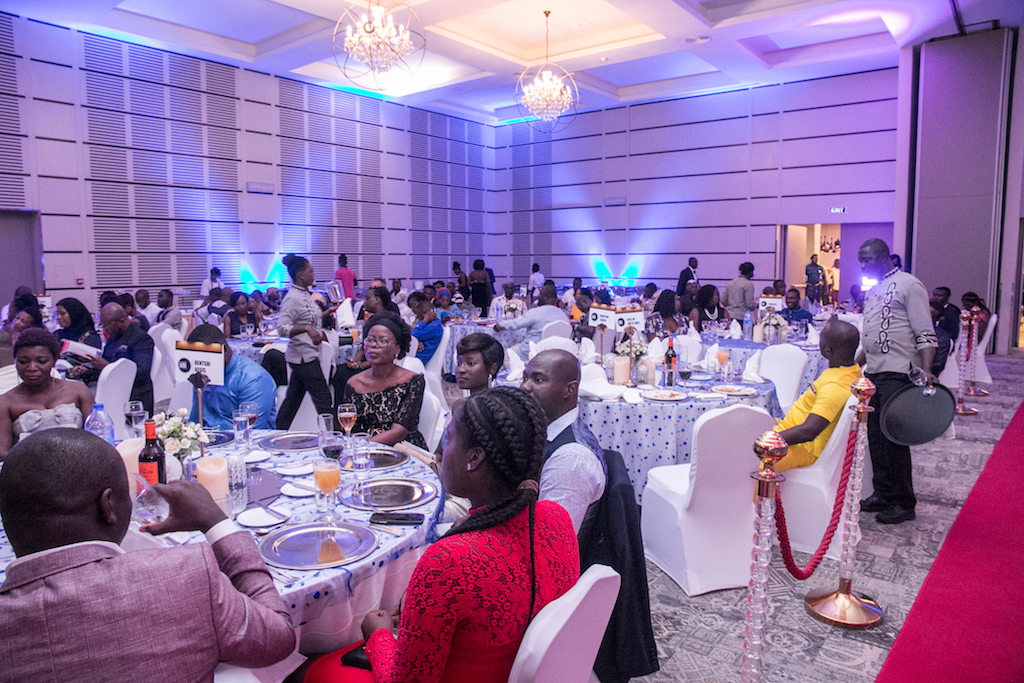Training Programme
AAG RENEWS CALL FOR ADVERTISING REGULATION
The Advertising Association of Ghana has renewed calls for regulation of
advertising practice in Ghana to protect the interest of consumers and to
ensure sanity in the industry.
Executive Director of the AAG, Francis Dadzie who made the call was speaking
at a signing ceremony of a grant agreement between the association and the
Business Sector Advocacy Challenge (BUSAC) Fund under the Business Sector
Programme Support in Accra on Friday.
“The Advertising Bill is the panacea for most of the challenges plaguing the
industry today such as the indiscriminate siting of out of home advertising
structures and will also lead to licensing of practitioners, professionalism,
consumer protection, and growth of the industry”, he said.
He added that the bill addresses issues such as consumer protection from
deceptive advertising, gender stereotyping and exploitation of children in
advertisements.
He disclosed that the association is currently engaging the Ministries of Trade
and Industry, and Communications to ensure the draft bill is passed by
parliament within the year.
With the support of BUSAC Fund, the association has since 2012 been
advocating for an Advertising Bill which will establish a legislative framework
leading to the set-up of an Advertising Council to regulate the industry.
The bill made it through parliament for a first reading in 2016 but could not be
passed before the mandate of the fourth parliament of the fourth republic
expired in December 2016. This means the whole process for passing the bill
has to be restarted.
Fund Manager, Nicholas Jorgensen Gebara explained why the Business Sector
Programme Support continues to partner the AAG in the advocacy for the
advertising bill. “We have been encouraging AAG to push for a bill to uphold
ethical standards for the advertising industry and we’re by this new agreement
following up for the association to push for the bill to pass through parliament.
The funds will be used to sensitize the parliamentary select committees on
Communications and Trade, Industry and Tourism as well as other
stakeholders on the need for the Advertising Bill.”
President of the Advertising Association of Ghana, Joel Nettey expressed
appreciation for the Business Sector Programme Support funded by DANIDA,
EU, USAID, and the BUSAC Fund which has made it possible for the AAG to
continue its advocacy for regulation of the advertising industry in Ghana.
IAA 80TH ANNIVERSARY CELEBRATION SUMMIT
| IAA 80th Anniversary When April 26th, 2018 6PM – 9PM Where Intersection 10 Hudson Yards |
Global Marketing Summit When April 27th, 2018 9AM – 1PM Where Time Warner Center, 10th Floor 60 Columbus Circle on 60th Street, Bet. Broadway & Columbus Circle |
80th Anniversary Celebration:
– Experience the latest product and services from Intersection, Google owned technology company that’s turning NYC into
one of the most progressive cities in the world
– Partner with IAA to launch new INDUSTRY COMPASS debate series, LIFE, on the future of modern brand building
– Meet IAA’s top, global members from around the world, across marketing, advertising and media
– Experience IAA’s iconic Birthday celebration!
- To participate in the IAA 80th Anniversary celebrations, contact us: info@aag.com.gh Tel: 0303938556 by March 3, 2018.
ISA INTERNATIONAL SIGN EXPO
Since its inception, ISA International Sign Expo has been breaking records in exhibit sales and attendance. Join over 20,000 colleagues and explore the nearly 600 knowledgeable suppliers who come together at this always exciting event.
Learn more about the ISA Sign Expo here: http://signexpo.org/about-the-show/about-isa-sign-expo/
- To attend the ISA Sign Expo, info@aag.com.gh/0303938556 by February 28, 2018.
DUBAI LYNX FESTIVAL OF CREATIVITY
Dubai Lynx is all about showing off the MENA region’s incredible creative output. It’s a four-day event that brings together top creatives, the world’s best brands, fledgling start-ups and everyone in between to learn, network and celebrate creative excellence in communications.
Learn more about Dubai Lynx here: https://www.dubailynx.com/
- To attend this festival of creativity, contact us: info@aag.com.gh/0303938556 by February 22, 2018.
AMA/AAG SMART CONFERENCE PIX & REPORT
Download Accra Metropolitan Assembly Report on Validation workshop for “Smart Procedures and Standards for out of Home (Outdoor) Advertisement”. held at the Accra City Hotel on Friday, 13TH October, 2017.
Download now
11TH. GONG GONG AWARDS – CALL FOR ENTRIES!!!
Preamble
The AAG Gong Gong Awards is the flagship industry event for the Advertising Industry in Ghana. Over the years the Awards have established benchmarks for excellence and ingenuity, rewarding creativity and outstanding innovative works, across all sectors of the industry.
The Awards will be for adverts that were produced and transmitted in the year 2016
Objectives of the Awards
To demonstrate that the purpose of Advertising is to contribute to the success of business, and to reward creativity and strategic thinking that have been developed locally, and added value to local businesses.
Entries are invited for the following Channels and Categories from Members and Non-Members:
CHANNELS
Radio/Print/Television/Outdoor/Digital(Online, Mobile Ads, Viral Films, Digital Campaigns)Social Media(Includes the Creation of Social Platforms, the use of Existing Social Platforms, and user Generated Content),Activation & Experiential, Mobile(Mobile Applications, Mobile Sites, Branded Games designed for Smart Phones or Tablets, Mobile Campaigns), Branded PR, Experiential & Shopper Marketing, Media Innovation(Traditional & Alternative Media) and Integrated Campaign
CATEGORIES
- Alcoholic Beverages
- Non Alcoholic Beverages
- Food & Confectionery
- Corporate & Services
- CSR
- Insurance
- Financial Institutions
- Textile & Fashion/Accessories
- Health & Personal Care
- Telecommunication
- Transport Services
- Aviation
- Automobiles
- Hospitality
- Restaurant
- Household Products
- Sports
- Estate Development
- Oil & Gas
- Entertainment
Entry Specifications
- Print/Press/Outdoor etc. Filename: jpg or pdf (max 5mb)
- Print/Press/Outdoor etc. Hard Copy mounted on board (max A2)
- Audio Filename: mp3 (max 5mb)
- Video Filename: .mov, .divx, .mpg4, (max 10mb)
- Digital: Filename, jpg or pdf (5mb) url: (ie http://aag.com.gh)
- Activations and online campaign entries can be submitted in the form of short case study videos. They should not be longer than three minutes.
- Case study Video Filename: .mov, .divx, .mpg4, (max 20mb)
- Provide proof of transmission (for both radio and television)
- Every entry should be on a separate CD, VCR, or DVD
Price per entry:
AAG Members – GH¢800.00; Non AAG Members – GH¢1,600.00
CLOSING DATE FOR ENTRIES: 11th.AUGUST, 2017
ENQUIRIES: ADVERTISING ASSOCIATION OF GHANA (AAG) RANDOLPH HOUSE, RING ROAD CENTRAL, ACCRA
TEL : 0303 938556 ; 0302 249352. WEBSITE: www.aag.com.gh
EMAIL: info @aag.com.gh
ADDITIONAL GONG GONG AWARDS PICTURES
[ngg_images source=”galleries” container_ids=”4″ override_thumbnail_settings=”0″ thumbnail_width=”240″ thumbnail_height=”160″ thumbnail_crop=”1″ images_per_page=”20″ number_of_columns=”0″ ajax_pagination=”0″ show_all_in_lightbox=”0″ use_imagebrowser_effect=”0″ show_slideshow_link=”1″ slideshow_link_text=”[Show slideshow]” order_by=”sortorder” order_direction=”ASC” returns=”included” maximum_entity_count=”500″ display_type=”photocrati-nextgen_basic_thumbnails”]
GONG GONG AWARDS GUEST SPEAKER’S SPEECH
Advertising Association of Ghana, Gong Gong awards 2016 Accra, Ghana
Theme: Impact of Digital Advertising on the Global Market
Guest Speaker: Kwame Akuffo Anoff-Ntow, PhD Director General, GBC
Theme: Impact of Digital Advertising on the Global Market
Guest Speaker: Kwame Akuffo Anoff-Ntow, PhD Director General, GBC
By the time this event is over, there is the high likelihood that the whole world would have heard about it or seen it on different platforms through different media. With the exception of those of us in this enclosure who are eye witnesses, so to speak, all the others would have to rely on one form of communication technology or another to experience this event. If it is being streamed live via the internet, that would mean this event is being carried in real time from source to the consumer, or citizen, as the case might be.
But it is not enough to wish. A wish such as wanting to access this event should be backed by appropriate technology be it a smartphone, a mobile device, a laptop, or a television set, as well as the required competence. In fact, one can argue that McLuhan’s prediction of a global village has truly arrived. At the time McLuhan made the global village remark, he was rightly pointing to the ways communication has pushed the frontiers of human interaction, facilitating such human contact across vast expanse of space.
Between then and now, what has changed is the breathtaking speed at which an event in one part of the world, such as this one, is seen instantaneously in another part several thousands of kilometres away across different time zones.
The theme of this event: “Impact of digital advertising on the global market” is a fitting testimony to this phenomenon. But before I unpack this title, let’s imagine these scenarios for a moment.
Its 7.30 am on a working day on the Ring Road in Accra. Traffic is as you will imagine, heavy. A grey Toyota V8 in mint condition with tinted glasses and air conditioned is stuck in the traffic. The chauffeur driven occupant in the backseat looks bored in his suit, trying to focus on an Economist Magazine he’s clutching. A middle-aged woman carrying lemon in a tray walks alongside his rolled up window and breaks into a repetitive refrain of “Yessss aboonuaa, abonuaaa, yesss abonuaaa, abonua”.
Just as the occupant thinks he’s had enough, another comes along hawking sugarcane carefully wrapped in polythene bags. “Yes Sugar cane, sugar cane. Yes sugar cane, ahwedie”! By the time the bored gentleman gets to his office, he would have encountered Pure Water, Dakoa, Dog chains and many different varieties of hawkers.
I am sure these scenarios are familiar to many of us. And like me, most of us have wondered if the hawkers pause for a moment to consider who their intended customers are? How does a hawker of tiger nuts and tree barks purported to possess aphrodisiac qualities, think of getting anywhere close to a bus conveying Catholic seminarians to a retreat?
From the onset, advertising was seen as the act of bringing a product to the attention of a prospective buyer. Pure and simple. The interface between the product and the prospective buyer, in real time or mediated, was all that mattered. The emphasis on this type of advertising is on exposure: expose the prospective buyer to the product. Not much attention was paid to the type of consumer or buyer.
Most of us recollect with nostalgia, amusement or wonder when back in the day, all an advertiser needed was to place his/her Ad on GBC. As a monopoly, it was reasonable to assume that anyone who watched television, GBC TV at the time, or listened to radio, GBC Radio was exposed to the same Ad. Never mind the fact that no one could provide the client with exactly how many people were watching or listening to any particular advert.
The market was not as fragmented as it is today and advertisers simply considered their job done when they exposed a mass audience to their product. Although the newspaper landscape was more fragmented, the same principle applied. Products on billboards was basic, often driven by known public faces such as actors and icons. Men and women of God were hardly or never seen on such banners.
Today images of well fed men of God, clad in designer suits, accompanied by their contented wives abound on our billboards. Many of them are invitations to crusades and spiritual encounters, while a few make audacious propositions that stretch from healing diseases with no known scientific cure to prophecies. An illiterate foreigner could very easily confuse some of these billboards as depicting rappers or showbiz icons.
Between then and now, advertising has become very scientific. Clients want to know how many eyeballs are watching a product. They want empirical evidence from media managers to support their claims that X or Y amount of viewers and listeners are exposed to their products. Media managers are now caught in an unending frenzy of matching audiences to products through targeted programming and careful scheduling.
Advertisers therefore expect far more than mere exposure. They want assurances that their products are exposed to the right audiences; the upwardly mobile, blue collar executives typically between the ages of 30 to 55, with money to spend. In short, the principle is not to waste your time with folks who have no financial wherewithal to go beyond exposure to purchase. This grouping is a distraction, even a vexation to the advertiser.
So what has changed? Advertising as we knew it before has moved from the real time, person-to-person hawking, through a mass mediated process to a more personalised and customised format. It is mediated through
communication technology, and once the user has a computer and online application as interface, he or she will receive prompts and adverts tailored to meet his/her tastes.
This is the world of digital advertising. Digital advertising, also called Internet advertising or marketing occurs when “businesses leverage internet technologies to deliver promotional advertisements to consumers. It includes promotional advertisements and messages delivered through emails, social media websites, online advertising on search engines, banner Ads and mobile or website affiliate programs” (Webopedia).
If this definition is anything to go by, the emphasis is on the medium more than the message. But the central questions in digital advertising today according to Dhanik, a contributor on Entrepreneur, are “Where will people listen/ watch? What content will they engage with? How do I reach them?” These questions capture both medium and message.
But these questions are not new. They merely present new challenges to the advertiser within a saturated media landscape where many media users are accessing customised content, often from non traditional audiovisual sources. Mobile video advertising, Native advertising, viewable impressions and Behavioural data, according to experts have become the four pillars upon which successful digital advertising hinge.
The theme “Impact of Digital Advertising on the Global Market” recognises the threats and opportunities associated with leveraging online technologies. It acknowledges its global nature, underlines the complexities associated with defining a market, and admit that these new practices impact on global capital. But I want to propose that this theme also calls for attention to be drawn to the intersections between technology, expertise and the global market.
The real danger in talking about digital advertising is that one is faced with the perennial danger of over emphasising the technology end of it. Even graver, is the penchant to disregard the skill set that comes with the ability to successfully match product to the right audience. But the gravest danger of them all is giving the message insufficient attention.
It is my opinion that although digital advertising provides boundless technological opportunities for the advertiser, the real and enduring challenge remains the message. As a rule, people watch programs not channels. As the mantra rightly goes, Content is King.
So I wish to underline, ladies and gentlemen, that in the world of digital advertising, the challenge for the prospective advertiser is not just how well he deploys technology to ensure targeted yet global access, but equally importantly, the message and how it is crafted. In so doing, the advertiser has to navigate for instance between local
tastes and global market expectations. Between local specificities and global concerns.
The ensuing “glocalisation”, or the synthesis of the global with the local poses the greatest challenge for the digital advertiser. The result or impact of overcoming this challenge is colossal for the skilled advertiser.
In short I want to draw your kind attention to the fact that leveraging online resources for advertising has become a very specialised art that requires both diligence and knowledge. It requires intimate insight into the demographics and behavorial patterns of your intended audience, as well as mastering how to effectively craft content which is engaging.
If there is any truth to the claim that advertising online is expected to increase four fold in the next two years, then it is clear that the advertiser who stands to benefit from this technological boom, is the one who has the knowledge and the tools to craft engaging content for both a local and global audience, and equally importantly, knows, based on research, where to find such (fragmented) audience.
I am by this submission pointing to the fact that content or advertising that is driven by technology now goes beyond the often taken for granted model of one source to many. What pertains now within this multimedia landscape is akin to what Appadurai (1992) refers to as “flows”: fluid, indeterminate, multidirectional interactions between media users. Such media users are at one time consumers, and at
others, producers. They post, edit, clone, share and actively participate in online interactions. In engaging with such an audience therefore, the element of interaction, feedback and convenience is critical to the prospective advertiser on a global platform.
Because advertising, whether digital or traditional is embedded within a content environment, selecting the right content environment is critical. Equally important, I argue is knowing that online users always look out for free content. More annoying, such users, whether on content producing or aggregate platforms insist on accessing such content at their own convenience.
Your task therefore goes beyond providing engaging content for your fragmented and slippery audience, that is if you find them. It also includes determining and selecting the right content environment that allows your advert to be consumed and digested with relish.
Talking about digestion, I take note of the fact that long talk at dinner is a sure recipe for indigestion, so let me proceed to avert your minds to some of the highlights I have reflected upon and round up.
I am proposing that in view of its global footprints, digital advertising is the future. This is enabled by technology. But a close look at the literature on technologically enabled communication in Africa also draws attention to the fact that availability of such technology does not always end up in efficient use. Therefore the prospective digital advertiser
ought to take notice of the debilitating impact of technological illiteracy on his/her product.
One principal concern for such an advertiser remains how to address the tastes and nuances of a local audience on a platform which is global by nature? If the sugar cane, abonua, tiger nuts scenario is anything to go by, it begins with the prospective advertiser knowing his/her intended audience and their behaviours; and closely matching their needs, interests and tastes with products.
The understanding that our chauffeur driven character is very unlikely to be interested in abonua, darkoa or tiger nuts being hawked along the Ring Road is indispensable knowledge for the digital advertiser.
To successfully achieve this, the digital advertiser has to identify the right mix of niche and generalised channels with generating engaging content. It will mean having to very often, tailor messages to fit into specialised channels and platforms. The chances of success are higher if additionally, such an advertiser takes note of the online consumers’ insistence on being an active participant in the communication process, as well as doing so at his/her convenience. Netflix, movies on demand and other customised online products provide us with lessons to draw from.
By and large, the impact of digital advertising could be measured by first, an understanding of the enormous economic prospects of global online footprints, as well as
identifying what drivers could support such a vision. I propose that technological literacy, engaging content generation and aggregation, developing and promoting a cashless economy are some of the drivers any digital advertiser should consider if he/she is to successfully address local concerns with a global outlook.
Thanks for your attention.

